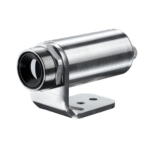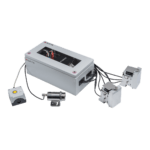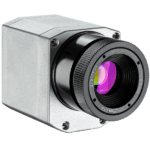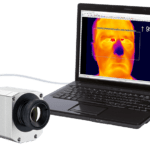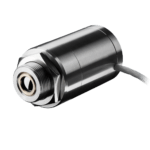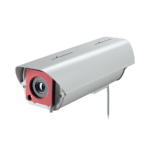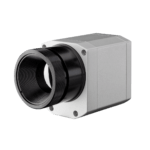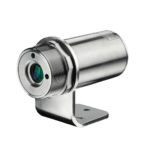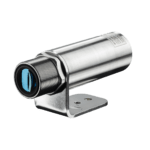Emissivity
Every object with a temperature above absolute zero (T0 = -273.15 °C) emits heat in the form of electromagnetic radiation. According to the Stefan-Boltzmann law, where MλS = σT4 and σ = 5.67*10-8 Wm-2T-4, the total amount of radiation emitted across the entire wavelength range is proportional to the fourth power of the object’s temperature. In this regard, emissivity refers to the ratio of radiant intensity between a black body and a gray body at the same temperature. Consequently, it will have a value between 0 and 1.
If the emissivity is known, an object’s temperature can be determined from the thermal radiation it emits. However, emissivity depends not only on the material under consideration, but also on the surface quality of the object (e.g., oxidized surface) and the direction of measurement. What’s more, where metals are concerned, emissivity is heavily dependent on the wavelength of the thermal radiation being emitted (figure). While non-metallic materials have a relatively high and constant emissivity at high wavelengths, the emissivity of metals is much lower, falling away considerably at higher wavelengths. Therefore, when measuring the temperature of metals it is necessary to choose a wavelength range which gives the highest possible emissivity within the temperature range being considered.
Share article
Contact for Advice and Sales Worldwide
We offer comprehensive advice for your individual applications
Our experienced application engineers ensure competent and reliable customer service in the field. In addition, Optris works closely with numerous distribution partners worldwide.
International
Ferdinand-Buisson-Str. 14
13127 Berlin, Germany
Phone: +49 30 500 197-0
E-Mail: sales@optris.com
Internet: www.optris.com
Managing Director:
Dr.-Ing. Ulrich Kienitz


